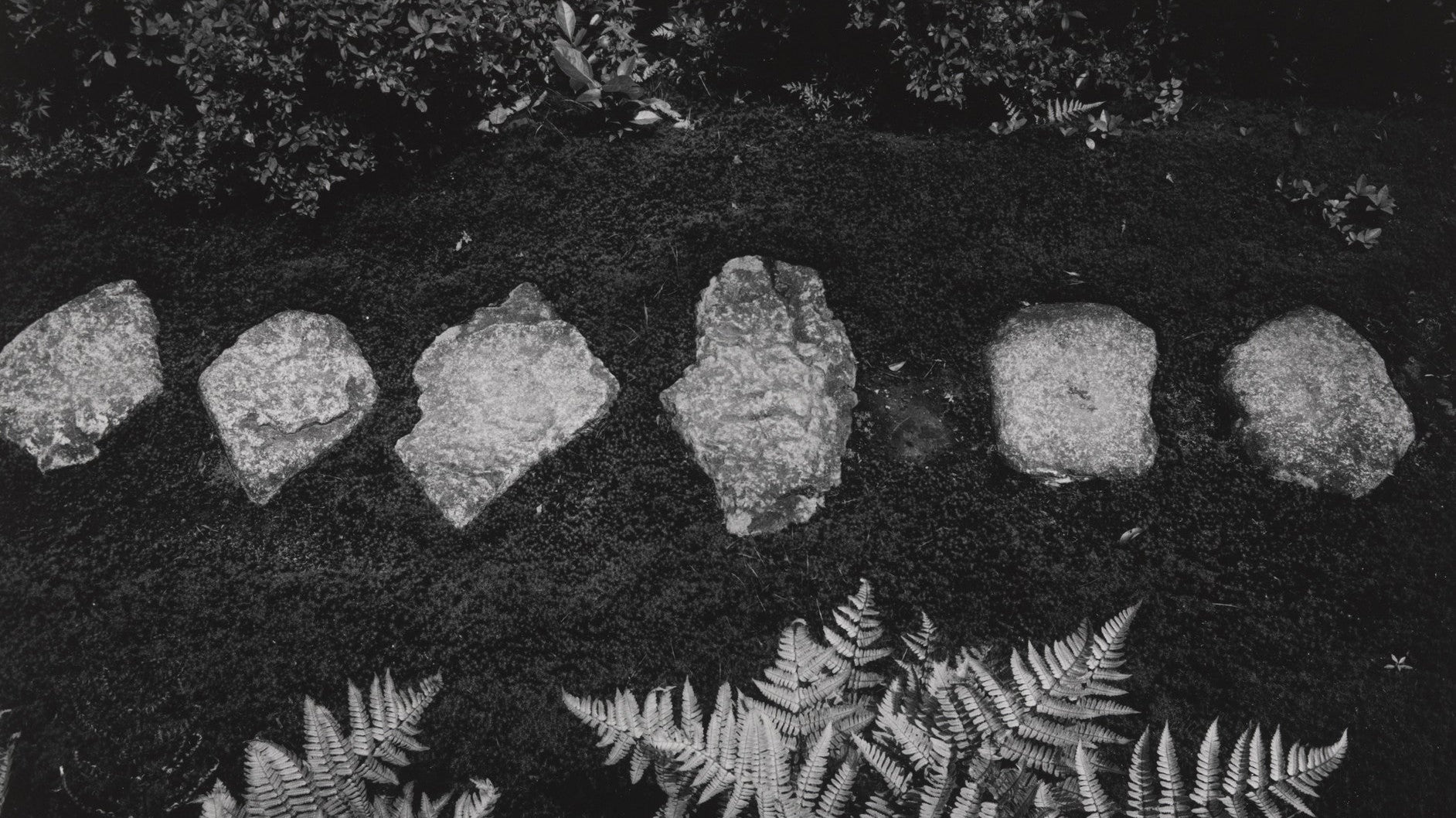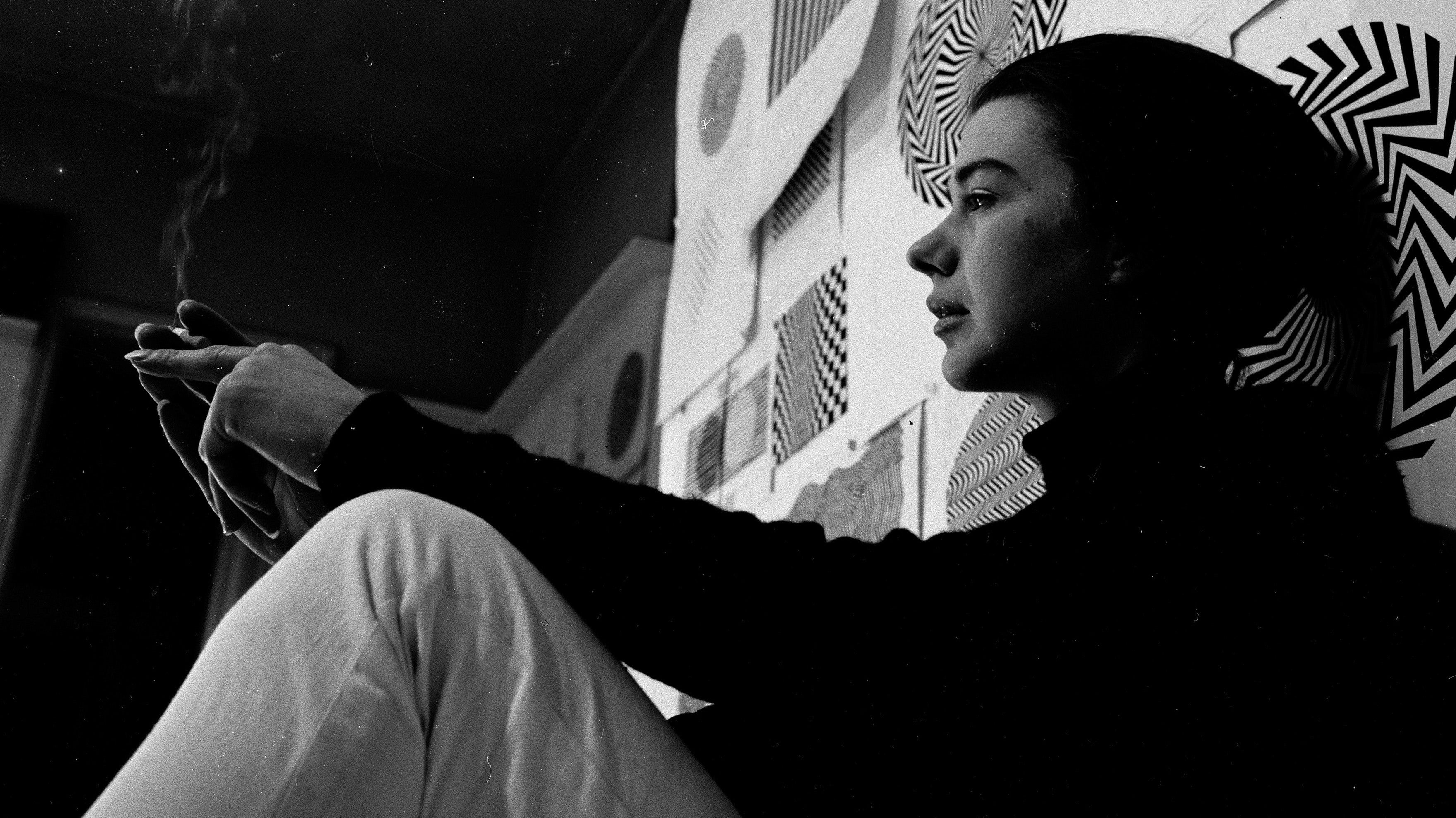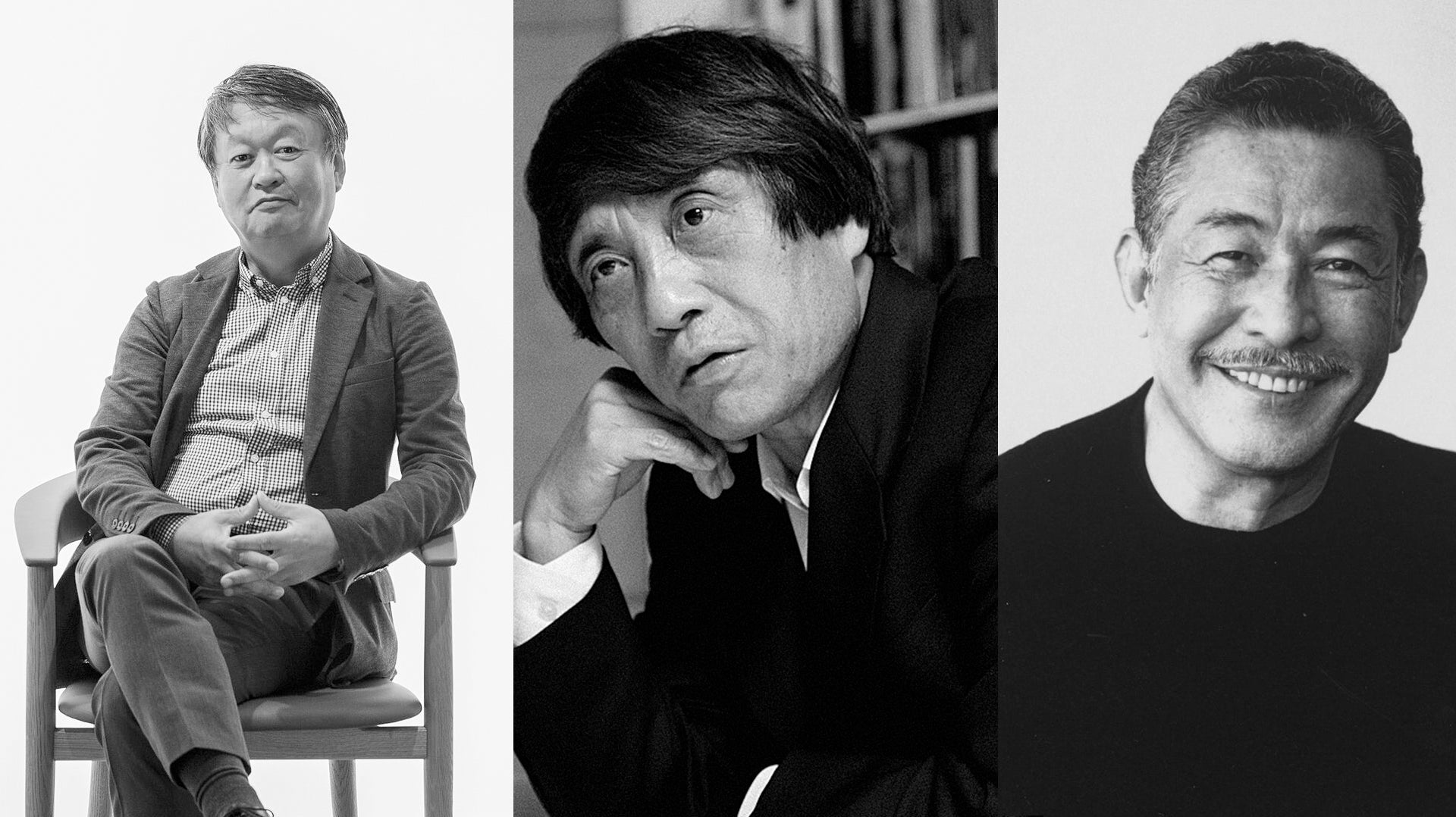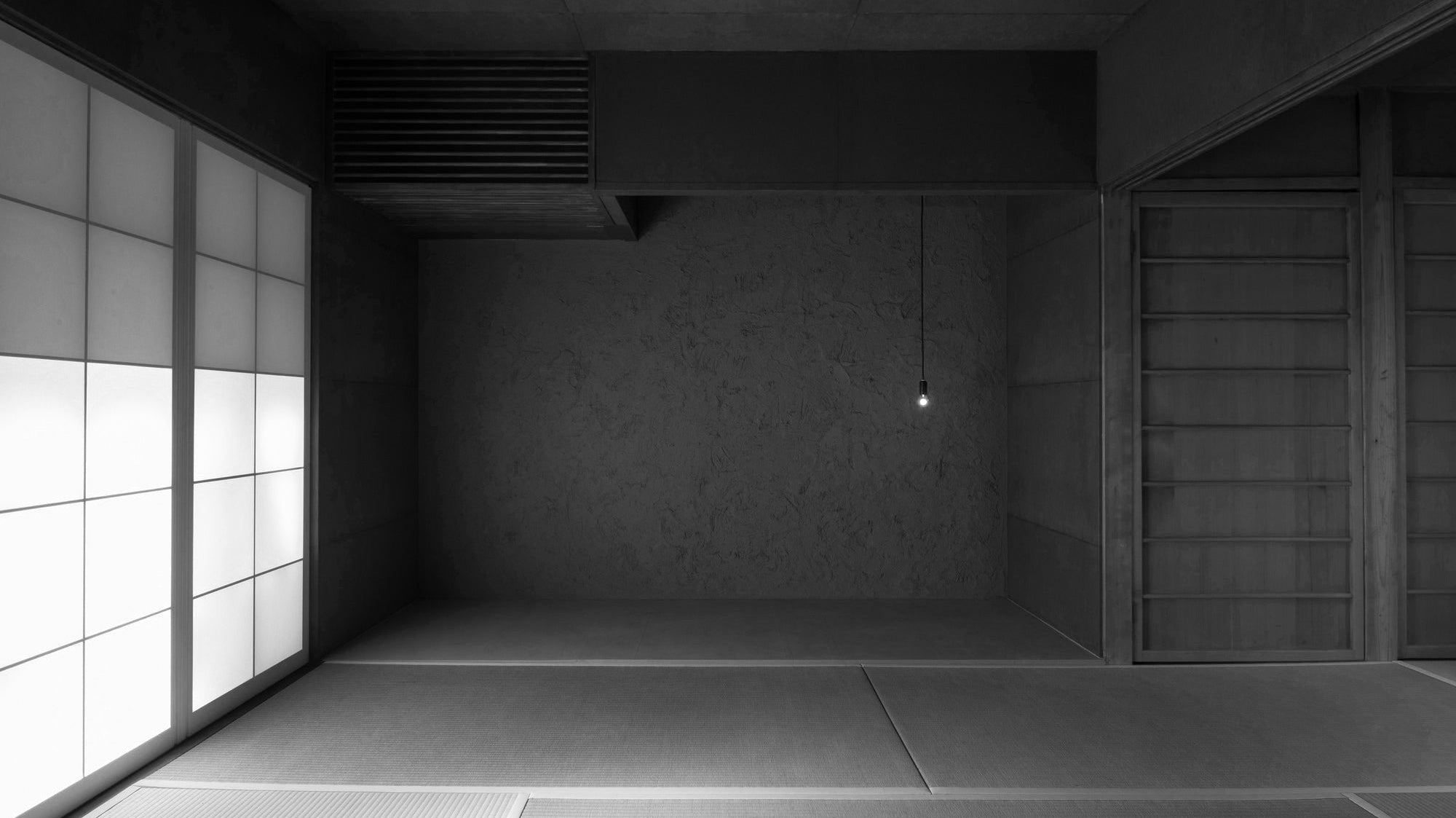Zaha Hadid, an Iraqi-born British architect, earned international acclaim for her radical deconstructivist designs. Recognized for dynamic curving forms and powerful, elongated structures, her groundbreaking achievements in 2004, as the first woman to be honored with the prestigious Pritzker Architecture Prize, firmly established her legacy in the annals of architectural history. From the late 20th century to the early 21st century, Zaha Hadid solidified her status as a prominent figure in architecture, leaving an enduring impact with her innovative and unconventional designs. In this article, let's learn about Zaha Hadid, the woman who changed the world of architecture and broke stereotypes in the field.
(Zaha Hadid's Architectural Designs of Mathematical Beauty - dans le gris)

Zaha Hadid in Issey Miyake, photographed by Irving Penn. Image courtesy of the Irving Penn Foundation.
(Zaha Hadid's Architectural Designs of Mathematical Beauty - dans le gris)
Math Was Like Sketching for Zaha Hadid
(Zaha Hadid's Architectural Designs of Mathematical Beauty - dans le gris)
Zaha Hadid maintained a profound connection with mathematics, and her expertise in the field significantly influenced her architectural approach. She pursued mathematics as an undergraduate at the American University of Beirut and later continued her studies at the Architectural Association School of Architecture in 1972. Zaha Hadid's grounding in mathematics played a pivotal role in shaping her distinctive design philosophy, marked by fluid forms and geometric complexity. Reflecting on her upbringing in Iraq, she once remarked, "When I was growing up in Iraq, math was an everyday part of life. We would play with math problems just as we would play with pens and paper to draw – math was like sketching." This statement certainly affirms her fascination with mathematical logic and geometry. Zaha Hadid saw mathematics as a tool for achieving structural innovation and pushing the boundaries of traditional design.
(Zaha Hadid's Architectural Designs of Mathematical Beauty - dans le gris)

Zaha Hadid's sketch of the Rosenthal Center for Contemporary Art. Image © Zaha Hadid Architects.
(Zaha Hadid's Architectural Designs of Mathematical Beauty - dans le gris)
Architecture's Queen of the Curve
(Zaha Hadid's Architectural Designs of Mathematical Beauty - dans le gris)
Zaha Hadid, celebrated for her fluid, curvilinear forms and elegantly complex designs, was bestowed with the title "Queen of Curves" by The Guardian. Recognized as an architect who "liberated architectural geometry, giving it a whole new expressive identity," Zaha Hadid consistently defied rectilinear norms. Opting for organic shapes, her designs left a unique and impactful visual impression. One notable example is the Heydar Aliyev Center. Zaha Hadid Architects, appointed as design architects following a competition in 2007, created this iconic building with sweeping curves and flowing lines. The design establishes a continuous, fluid relationship between the surrounding plaza and the building's interior.
(Zaha Hadid's Architectural Designs of Mathematical Beauty - dans le gris)
Pioneering Parametric Design in Architecture
(Zaha Hadid's Architectural Designs of Mathematical Beauty - dans le gris)
Zaha Hadid was a pioneer in the use of parametric design in architecture. Parametric design is a computational approach that involves using algorithms to generate and manipulate architectural forms. In this method, parameters and rules define how the design should react or change based on the original design idea. Zaha Hadid's choice of parametric design reflected her innovative and forward-thinking design philosophy. She believed in the power of technology to create complex, dynamic, and highly responsive architectural forms. Moreover, with parametric design, Zaha Hadid could create fluid, dynamic, and organic shapes that went beyond the limitations of traditional design methods. That's why we often feel Zaha Hadid's architectural buildings feature intricate curves, twists, and bends that were made possible through parametric modeling.
(Zaha Hadid's Architectural Designs of Mathematical Beauty - dans le gris)
Parametric design is not only groundbreaking in shaping architectural forms but also allows for the incorporation of environmental considerations. Zaha Hadid, by employing the method of parametric design to simulate and analyze various environmental factors such as sunlight and wind, helped optimize the performance and sustainability of her buildings. This ability allowed Zaha Hadid to create structures devoid of traditional architectural constraints, resulting in buildings that stand as works of art and also push the boundaries of architectural form, redefining the relationship between structure and space.
(Zaha Hadid's Architectural Designs of Mathematical Beauty - dans le gris)
Zaha Hadid's Iconic Architectural Masterpieces
(Zaha Hadid's Architectural Designs of Mathematical Beauty - dans le gris)
Vitra Fire Station | Weil am Rhein, Germany
(Zaha Hadid's Architectural Designs of Mathematical Beauty - dans le gris)
Left: The Vitra Fire Station stands as a built translation of Hadid's early paintings. Image courtesy of Zaha Hadid Architects. Right: Zaha Hadid designed the Vitra Fire Station. Photos by Christian Richters.
(Zaha Hadid's Architectural Designs of Mathematical Beauty - dans le gris)
The Vitra Fire Station in Weil am Rhein, Germany, stands as Zaha Hadid's first built project, completed in 1993. Reminiscent of her paintings, the building conveys a powerful sensation of movement, showcasing disordered and dynamic forms with a sense of fluidity. Characterized by its dynamic and angular forms, the design of the Vitra Fire Station played a pivotal role in establishing the deconstructivist style. Although originally commissioned as a fire station for the Vitra Campus, it now serves as an exhibition and special event space.
(Zaha Hadid's Architectural Designs of Mathematical Beauty - dans le gris)
MAXXI National Museum of XXI Century Arts | Rome, Italy
(Zaha Hadid's Architectural Designs of Mathematical Beauty - dans le gris)
MAXXI Museum, Designed by Zaha Hadid Architects. Image © Zaha Hadid Architects, Photo by Iwan Baan.
(Zaha Hadid's Architectural Designs of Mathematical Beauty - dans le gris)
MAXXI is a major architectural work designed by Zaha Hadid and won the Stirling Prize of the Royal Institute of British Architects in 2010. The museum is the first Italian national institution devoted to contemporary creativity and is conceived as a broad cultural campus. As declared by Zaha Hadid Architects, "the museum is not an object-container but rather a campus for art," where flows and pathways overlap and connect to create a dynamic and interactive space. The concept behind the design by Zaha Hadid Architects was to create a fluid building, embodying the chaotic fluidity of modern life.
(Zaha Hadid's Architectural Designs of Mathematical Beauty - dans le gris)
DDP Dongdaemun Design Plaza | Seoul, South Korea
(Zaha Hadid's Architectural Designs of Mathematical Beauty - dans le gris)
DDP Dongdaemun Design Plaza, Designed by Zaha Hadid Architects. Image © Zaha Hadid Architects, Photo by Virgile Simon Bertrand.
(Zaha Hadid's Architectural Designs of Mathematical Beauty - dans le gris)
The DDP stands out as the first public project and the biggest atypical project created using 3D modeling techniques in Korea. Designed by Zaha Hadid and Samoo, it features a distinctively neofuturistic design and was completed in 2014. Zaha Hadid Architects employed parametric building information modeling software and design computation, improving not only the efficiency of the workflow but also facilitating the most informed design decisions within a compressed project period.
(Zaha Hadid's Architectural Designs of Mathematical Beauty - dans le gris)
London Aquatics Centre | London, United Kingdom
(Zaha Hadid's Architectural Designs of Mathematical Beauty - dans le gris)

London Aquatics Centre, Designed by Zaha Hadid Architects. Image © Zaha Hadid Architects, Photo by Hufton+Crow.
(Zaha Hadid's Architectural Designs of Mathematical Beauty - dans le gris)
The London Aquatics Centre, designed by Zaha Hadid Architects, is located at Queen Elizabeth Olympic Park in Stratford, London. The architectural design takes inspiration from the flowing movement of water, creating spaces that harmonize with the nearby river landscape of the Olympic Park. The roof curves up like a wave, smoothly wrapping around the pools and outlining the shapes of the swimming and diving areas. As with other designs by Zaha Hadid, this architectural masterpiece exemplifies the fluidity of beauty.
(Zaha Hadid's Architectural Designs of Mathematical Beauty - dans le gris)
Serpentine Sackler Gallery | London, United Kingdom
(Zaha Hadid's Architectural Designs of Mathematical Beauty - dans le gris)
Serpentine Sackler Gallery, Designed by Zaha Hadid Architects. Image © Zaha Hadid Architects, Photo by Luke Hayes.
(Zaha Hadid's Architectural Designs of Mathematical Beauty - dans le gris)
The Serpentine Sackler Gallery, designed by Zaha Hadid, is the second art space to form a synthesis of old and new, following MAXXI in Rome. Occupying a 200-year-old former gunpowder store, the Serpentine Sackler Gallery underwent renovation by Zaha Hadid Architects to transform the old brick building into new gallery spaces. This gallery marks Zaha Hadid's first permanent tensile structure in the UK, constructed from a glass-fiber textile. The design creates a graceful white canopy that appears to naturally emerge from the original brickwork of the single-story gallery building.
(Zaha Hadid's Architectural Designs of Mathematical Beauty - dans le gris)
Eli and Edythe Broad Art Museum | East Lansing, United States
(Zaha Hadid's Architectural Designs of Mathematical Beauty - dans le gris)
Eli and Edythe Broad Art Museum, Designed by Zaha Hadid Architects. Image © Zaha Hadid Architects, Photo by Paul Warchol.
(Zaha Hadid's Architectural Designs of Mathematical Beauty - dans le gris)
The Eli and Edythe Broad Art Museum is a contemporary art museum designed by Zaha Hadid located at the northern edge of the Michigan State University campus. It features a pleated facade of stainless steel and glass, contrasting with the surrounding red brickwork of the university’s Collegiate Gothic north campus. The building design was chosen through a competition, and Zaha Hadid won in 2008 to design the museum.
(Zaha Hadid's Architectural Designs of Mathematical Beauty - dans le gris)
Galaxy SOHO | Beijing, China
(Zaha Hadid's Architectural Designs of Mathematical Beauty - dans le gris)
Galaxy SOHO, Designed by Zaha Hadid Architects. Image © Zaha Hadid Architects, Photo by Iwan Baan.
(Zaha Hadid's Architectural Designs of Mathematical Beauty - dans le gris)
The Galaxy SOHO project is an urban complex in Beijing, China, designed by Zaha Hadid. Drawing inspiration from traditional Chinese architecture, the design incorporates courtyards to establish continuous open spaces within. The building comprises five interconnected and flowing sections, separated, blended, or linked by stretched bridges. This design results in a panoramic structure without corners or abrupt transitions. Nevertheless, the Galaxy SOHO is considered one of the most controversial structures in China. Critics strongly object to the new complex, claiming that it has significantly disrupted the visual harmony of the centuries-old neighborhood in the traditional streetscape of old Beijing.
(Zaha Hadid's Architectural Designs of Mathematical Beauty - dans le gris)
Zaha Hadid's Innovative Approach to Product Design
(Zaha Hadid's Architectural Designs of Mathematical Beauty - dans le gris)
Zaha Hadid once said, "I have always appreciated those who dare to experiment with materials and proportions." Zaha Hadid is not only renowned as an architect, but she also expanded her creative vision into various design disciplines. In 2006, she founded Zaha Hadid Design (ZHD) as a multidisciplinary design practice with the aim of pushing the boundaries of contemporary design by implementing the latest technological and material advancements with a thorough methodological approach. Zaha Hadid Design (ZHD) collaborates with globally recognized brands, undertaking diverse commissions spanning fashion, jewelry, furniture design, limited-edition accessories, interiors, exhibitions, and set design. Below, let's see a few samples of how Zaha Hadid turned her design approach into product design.
(Zaha Hadid's Architectural Designs of Mathematical Beauty - dans le gris)
H 356 Zaha Hadid for Valli & Valli
(Zaha Hadid's Architectural Designs of Mathematical Beauty - dans le gris)
The H 356 Zaha Hadid series includes a door handle and window handle.
(Zaha Hadid's Architectural Designs of Mathematical Beauty - dans le gris)
H 356 by Zaha Hadid draws inspiration from an extraordinary and futuristic design concept. The profile, characterized by broken lines, resembles a futuristic sculpture with a twisted angular shape. The resulting indentations and raised parts create surprising comfort and usability, offering a unique take on the handle that looks ahead to the future of design. The handle embodies a sense of geometric beauty, much like Zaha Hadid's architectural expression evident in every detail.
(Zaha Hadid's Architectural Designs of Mathematical Beauty - dans le gris)
Zaha Hadid's Liquid Glacial Collection for David Gill Gallery
(Zaha Hadid's Architectural Designs of Mathematical Beauty - dans le gris)

Zaha Hadid, Chair "Liquid Glacial" (Clear), 2015
(Zaha Hadid's Architectural Designs of Mathematical Beauty - dans le gris)
Zaha Hadid's features include fragmented geometries and free-flowing curvilinear shapes, which are also reflected in her furniture design. The "Liquid Glacial" collection is crafted to resemble ice formations, with curved shapes intended to mimic the forms of melting glacial ice. The horizontal sections of the stools gently slope into vertical supports, creating a visual impression of liquid pouring. Zaha Hadid's "Liquid Glacial" series has sold for up to six figures at auction.
(Zaha Hadid's Architectural Designs of Mathematical Beauty - dans le gris)
Aria and Avia lamps by Zaha Hadid for Slamp
(Zaha Hadid's Architectural Designs of Mathematical Beauty - dans le gris)
Aria and Avia lamps, designed by Zaha Hadid, form an illuminating sculpture that enchants onlookers with its blend of light and technology.
(Zaha Hadid's Architectural Designs of Mathematical Beauty - dans le gris)
Zaha Hadid designed pendant lamps for the Italian brand Slamp. The lamps blend the grandeur of magnificent architecture with practical everyday lighting, seamlessly incorporating large forms with cutting-edge lighting techniques and technology. Their voluminous forms, coupled with innovative lighting technology, bring Zaha Hadid's revolutionary and iconic semantics to any domestic or public space.
(Zaha Hadid's Architectural Designs of Mathematical Beauty - dans le gris)
Tau Vases by Zaha Hadid for Citco
(Zaha Hadid's Architectural Designs of Mathematical Beauty - dans le gris)
Tau Vases by Zaha Hadid, showcased at the 2015 Salone del Mobile in Milan.
(Zaha Hadid's Architectural Designs of Mathematical Beauty - dans le gris)
At the 2015 Salone del Mobile in Milan, Zaha Hadid presented a marble collection for the Italian brand Citco. The vases take on an organic form, emerging as a series of intricately rendered pleats designed to express the formal complexity of natural growth systems. The showcase highlights Zaha Hadid's bold, fluid forms and continues her longstanding collaboration with the company.
(Zaha Hadid's Architectural Designs of Mathematical Beauty - dans le gris)
Zaha Hadid Designs Jewelry for Georg Jensen
(Zaha Hadid's Architectural Designs of Mathematical Beauty - dans le gris)
Zaha Hadid's jewelry collection in collaboration with Georg Jensen.
(Zaha Hadid's Architectural Designs of Mathematical Beauty - dans le gris)
Zaha Hadid is the second architect to collaborate with the Danish jewelry brand Georg Jensen. The Lamellae collection references the sculptural forms and curves of Zaha Hadid's most famous architecture, bold yet organic. As Zaha Hadid mentions, "Working with Georg Jensen presented an opportunity to express our ideas in different scales and through different media. Our challenge was to translate that into something that can be worn; to reinterpret the rich history and tradition of Georg Jensen’s design approach into something new." It seems Zaha Hadid successfully turned architecture into jewelry pieces.
(Zaha Hadid's Architectural Designs of Mathematical Beauty - dans le gris)
NOVA Shoe by Zaha Hadid for United Nude
(Zaha Hadid's Architectural Designs of Mathematical Beauty - dans le gris)
The NOVA shoe, designed by Zaha Hadid Architects for the shoe brand United Nude.
(Zaha Hadid's Architectural Designs of Mathematical Beauty - dans le gris)
At first sight, what do you think it is? The futuristic and metallic appearance might suggest a metal object, but it is actually a pair of shoes. The NOVA shoe, designed by Zaha Hadid Architects for the shoe brand United Nude, claims to be the first-ever shoe to use rotation molding in its manufacture. The shoe also employs injection molding and vacuum casting. With Zaha Hadid's constant desire for experimentation and innovation, she has turned to the world of smaller-scale objects to explore new fabrication techniques and possibly redefine formal relationships. The result is that Zaha Hadid brings her architectural style into the shoes; the NOVA shoe design transcends the disciplines of fashion and architecture.
(Zaha Hadid's Architectural Designs of Mathematical Beauty - dans le gris)
Loa and Vesu Vases designed Zaha Hadid for Wiener Silber Manufactur
(Zaha Hadid's Architectural Designs of Mathematical Beauty - dans le gris)
Zaha Hadid, Loa Vase, 2014
(Zaha Hadid's Architectural Designs of Mathematical Beauty - dans le gris)
Zaha Hadid created a pair of magnificent silver vases for the Viennese firm Wiener Silber Manufactur. The Loa and Vesu vases feature flowing contours that wind inwards, and reflections of light reinforce the impression of fluidity, while the silver gives a fascinating luster. These vases are made of pure silver and are entirely handcrafted. Through Zaha Hadid's innovative design combined with craftsmanship, they embody the beauty of modern aesthetics.
(Zaha Hadid's Architectural Designs of Mathematical Beauty - dans le gris)
Read More Architecture Articles:
• Deconstructivism: From Philosophy to Contemporary Architecture
• Postmodern Architecture: Definition, Characteristics and Examples
• Tadao Ando: Minimalism and Light in Concrete Architecture
• Brutalist Architecture: Origins, Characteristics, and Examples
(Zaha Hadid's Architectural Designs of Mathematical Beauty - dans le gris)
About Us
Dans Le Gris is a brand that began with everyday jewelry, with each handmade piece designed and crafted in Taiwan. We deeply value every detail, dedicating ourselves to creating timeless pieces through collaboration with experienced craftsmen.
In our journal, we provide irregular updates featuring articles about art, culture, and design. Our curated content encompasses diverse aspects of life, with the aspiration to offer meaningful insights and inspiration.






